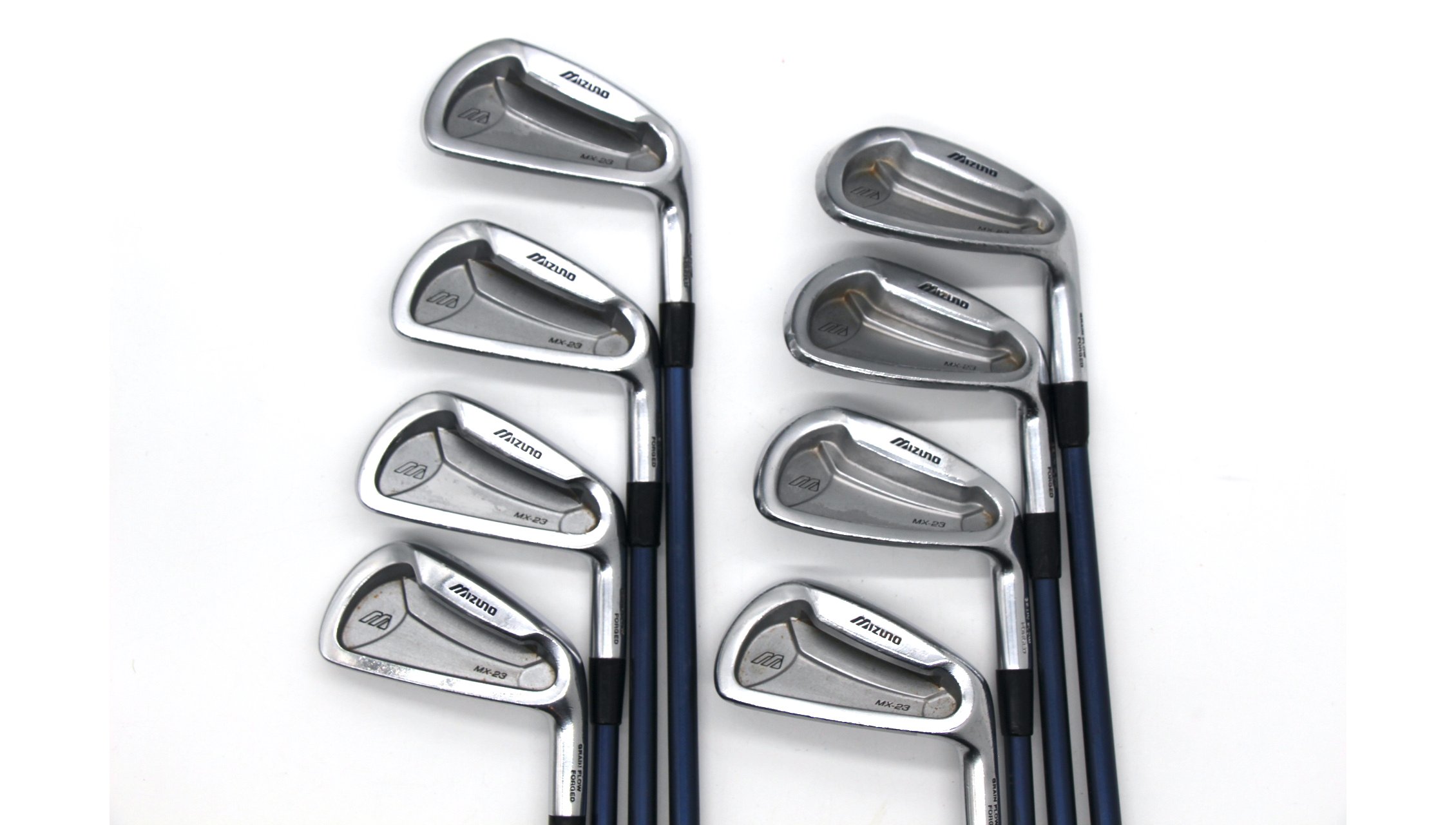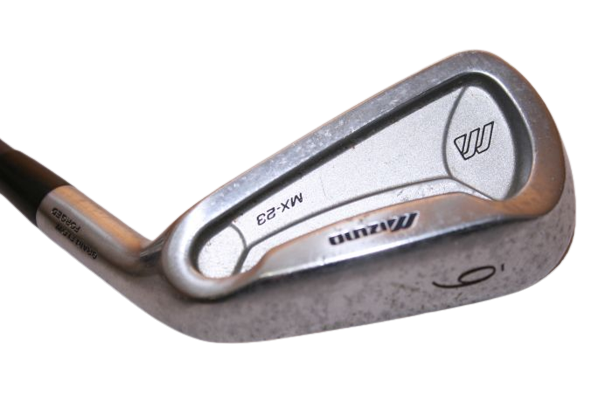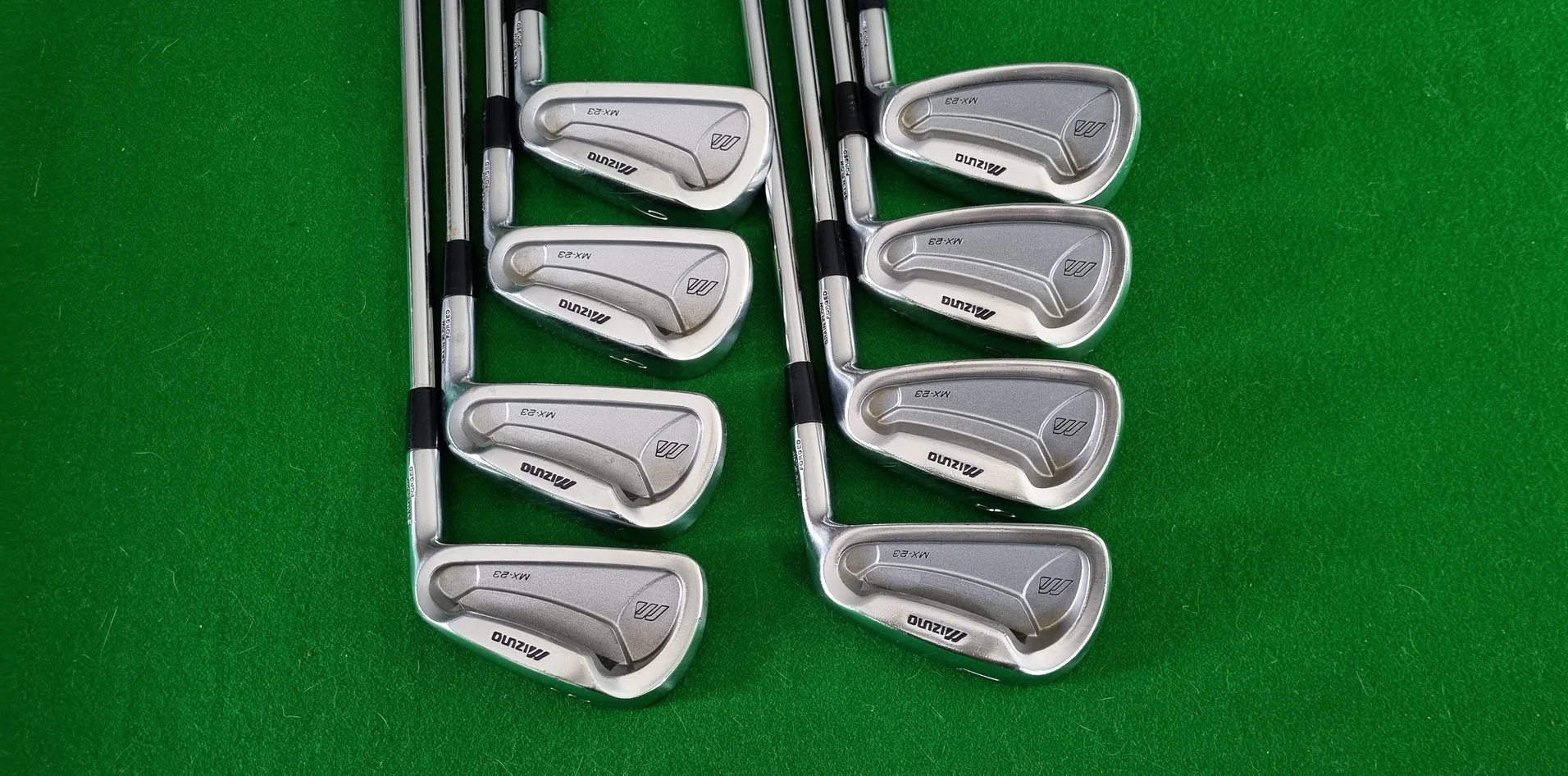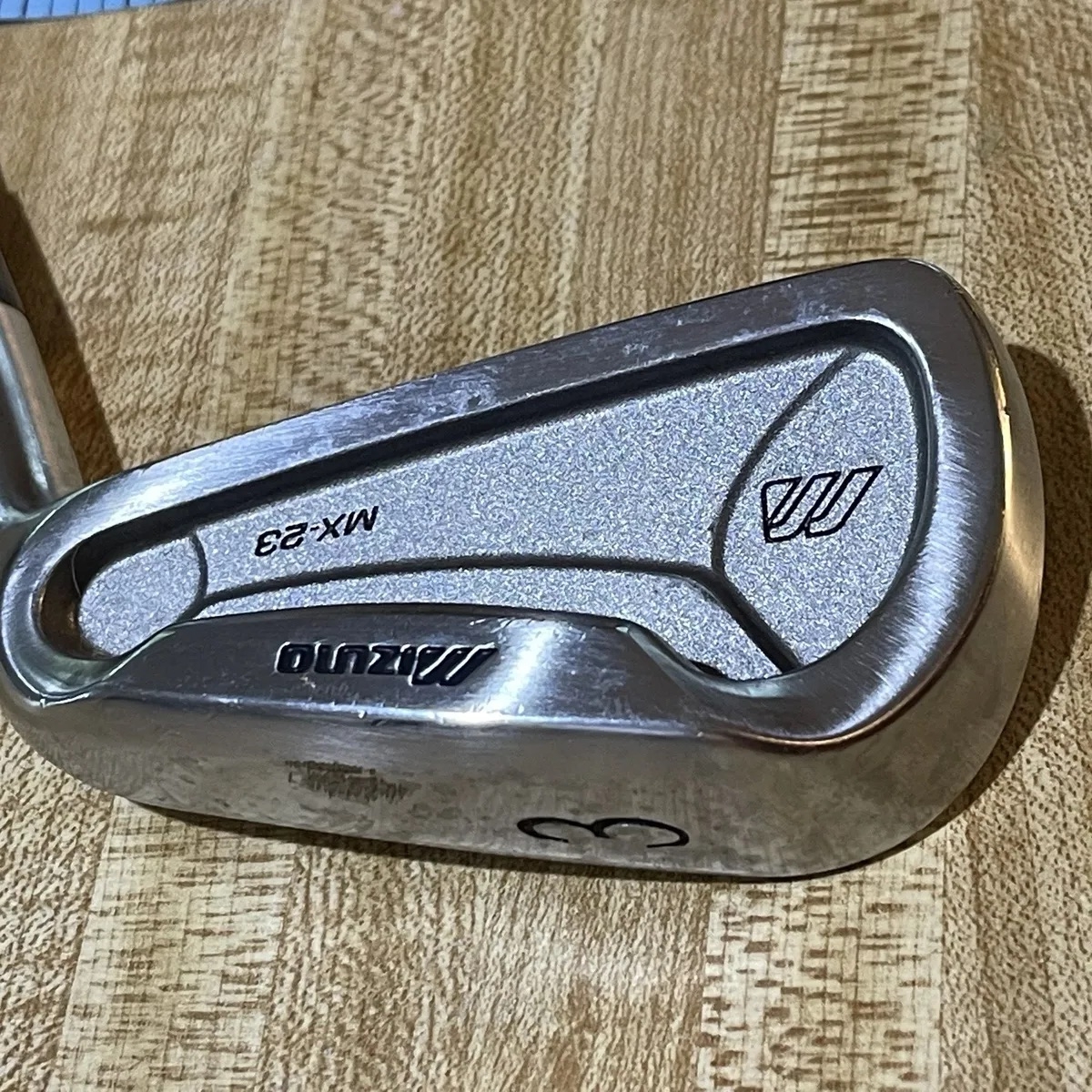Mizuno MX 23 Irons Review – Are They Forgiving for High Handicappers?

“The Mizuno MX 23 irons debuted in 2003. They underwent Mizuno’s famed grain flow forging process but were designed to be serious game improvement irons.”
The main question that surrounds the Mizuno MX 23 irons is, “can you really have the best of both worlds?” Can a forged iron really be as forgiving as a cast iron which, in general, will give you a larger sweet spot and will have a larger overall profile? Back in 2003, Mizuno thought it could deliver the best of both worlds.
The Mizuno MX 23 irons don’t look like many of the Mizuno irons I have tested in the past. They are certainly an anomaly for the company because they are forged irons but they have a bigger profile than most forged Mizuno irons. I tested them to see firsthand if they have any value for high handicappers.
Are the Mizuno MX 23 Irons Still Good?
“After a short initial test session at the range, I was curious as to why Mizuno doesn’t make these irons any more.”
Are the Mizuno MX 23 irons still good? I can’t overstate how good they are. But let’s start with some of the basic features before I start gushing about their performance. The Mizuno MX 23 are grain flow forged so they have an exceptionally soft feel and amazing feedback. The feel is sweet enough to appease experienced players with distinguished tastes.
But unlike most forged Mizuno irons, the Mizuno MX 23’s have a fairly long heel to toe length. They also forged a fairly beefy cavity back with a deep undercut. So at address, they look more like modern game improvement irons than forged players performance irons. And as you can imagine, the larger profile makes them more forgiving than traditional forged irons.
The Mizuno MX 23 irons also feature a milled cavity back so as much weight as possible could be moved low in the head and along the perimeter of the face. Again, solid forgiveness features.
The first thing I loved about the Mizuno MX 23 irons was that the launch was supremely workable. In fact, I can’t remember the last time I’ve played irons with such varied launch. It was very easy for me to get the ball over trees and bunkers even with the 4-iron. And when I needed to hit a draw towards a back/left pin, I was able to do so with the 7-iron. As expected, I was punching the ball low with the long irons which, for my swing and tempo, yielded very good distance.
I had no trouble landing the ball in the heart of the green from the left side of the fairway and about 203 yards out (4-iron). And when I mis-hit, I didn’t get a jarring jolt up my arms. Instead, it was a gentle click that sounded a bit different than face-center strikes. In any case, I could feel where I made contact on the face without being shocked.
Are the Mizuno MX 23 Irons Forgiving for High Handicappers?
“I can’t see any major issues that high handicappers would have with these irons.”
They play long, they can be launched to get you over trees and bunkers and when you mis-hit they won’t send your ball into the trees. The spin rates are a little high so you still have to be careful with extreme mis-hits resulting in hooks and slices. But as long as you are moderately accurate, you will have a great time with these irons.
The blade length creates more forgiveness for high handicappers and the moderate offset will help you with accuracy.
Mizuno MX 23 Vs Mizuno MX 200 Irons

“The Mizuno MX 200 irons are also grain flow forged.”
And like the Mizuno MX 23’s the MX 200 irons were designed with forgiveness in mind. They have a similar head profile as the Mizuno MX 23 irons and special Y-Tuning technology that moves the sweet spot out near the toe. If you are looking for a forgiving set of forged irons, both the Mizuno MX 23s and the MX 200 irons would be solid choices.
Mizuno MX 23 First Impressions

“I was surprised at the size of the irons right away.”
They were larger than any Mizuno irons I’ve ever tested before so I was a bit worried that they would lack feel or workability. But my fears were allayed after just a few swings. The Mizuno MX 23 irons retain supreme forgiveness while delivering solid workability.
Mizuno MX 23 Selling Points
- Grain flow forged
- Milled cavity backs
- Deep cavity undercut
- Workable
- Modified U-grooves
Mizuno MX 23 Key Technology
“The technology behind these irons is a bit more advanced than your typical game improvement irons.”
Milled Cavity Back
The milled cavity back saves a ton of weight which is then moved to the bottom of the head.
Modified U-Grooves
The U-grooves create more spin in the short irons, allowing for enhanced stopping power.
Grain Flow Forged
The Mizuno MX 23 irons are forged in the tradition of the highest-quality Mizuno irons, past and present.
Mizuno MX 23 Loft & Lie
| Club | Loft (degrees) | Lie (degrees) |
| 3-iron | 20 | 59.5 |
| 4-iron | 23 | 60 |
| 5-iron | 26 | 60.5 |
| 6-iron | 29 | 61 |
| 7-iron | 33 | 61.5 |
| 8-iron | 37 | 62 |
| 9-iron | 41 | 62.5 |
Who Should Buy the Mizuno MX 23 Irons?

“Anyone who wants a forgiving set of irons that doesn’t skimp on feel and accuracy.”
Again, I am amazed that they don’t make these irons any more. The Mizuno MX 23 irons truly give you the best of both worlds. They would be great for any player in the 10-22 handicap range. They are honestly the best irons I’ve tested in a long time and I can’t believe that they are 20 years old. If you’re a mid or high handicapper, do yourself a favor and find a used set of these irons online.
Distance: 97/100
Forgiveness: 96/100
Workability: 97/100
Overall Performance: 98/100
Value: 98/100





